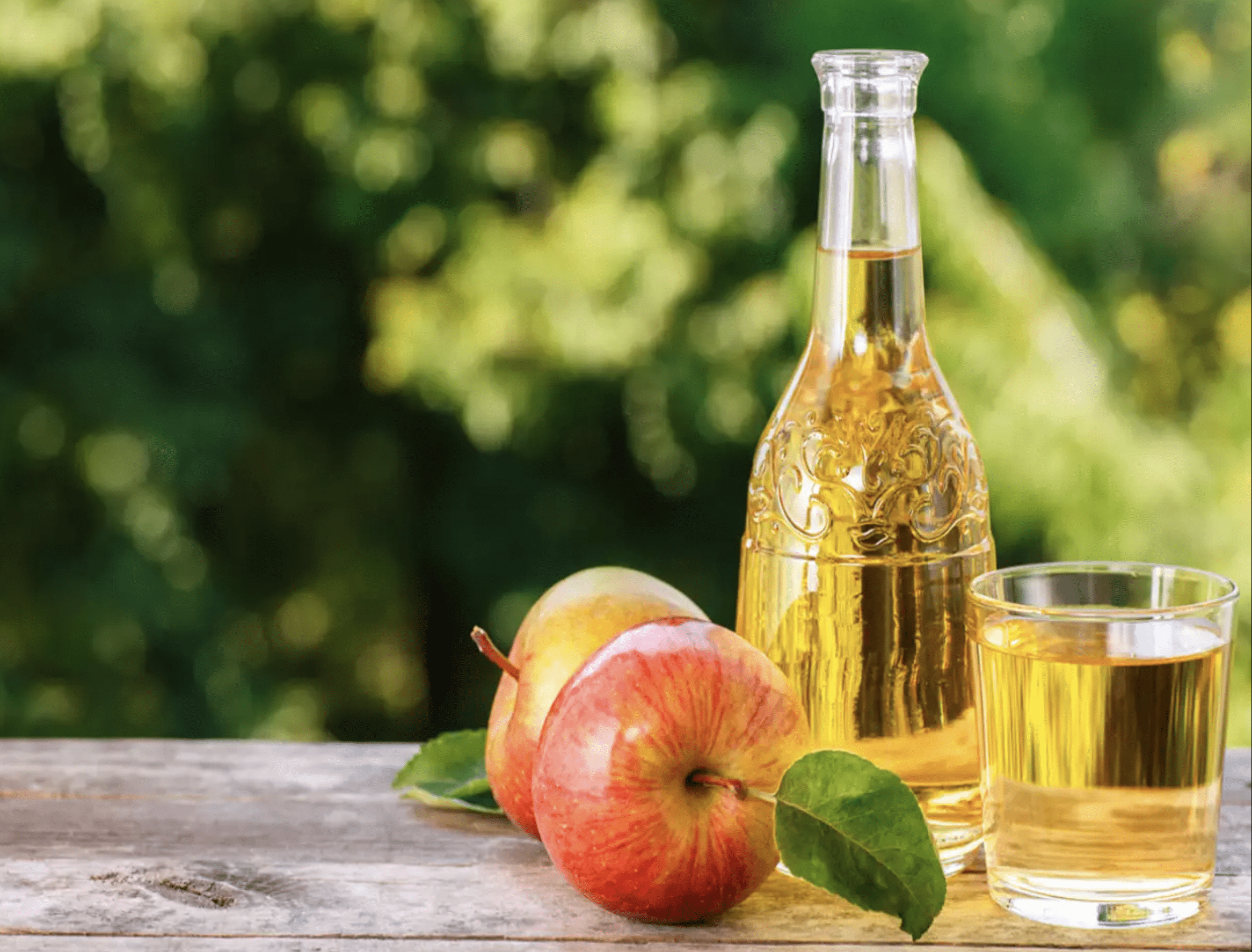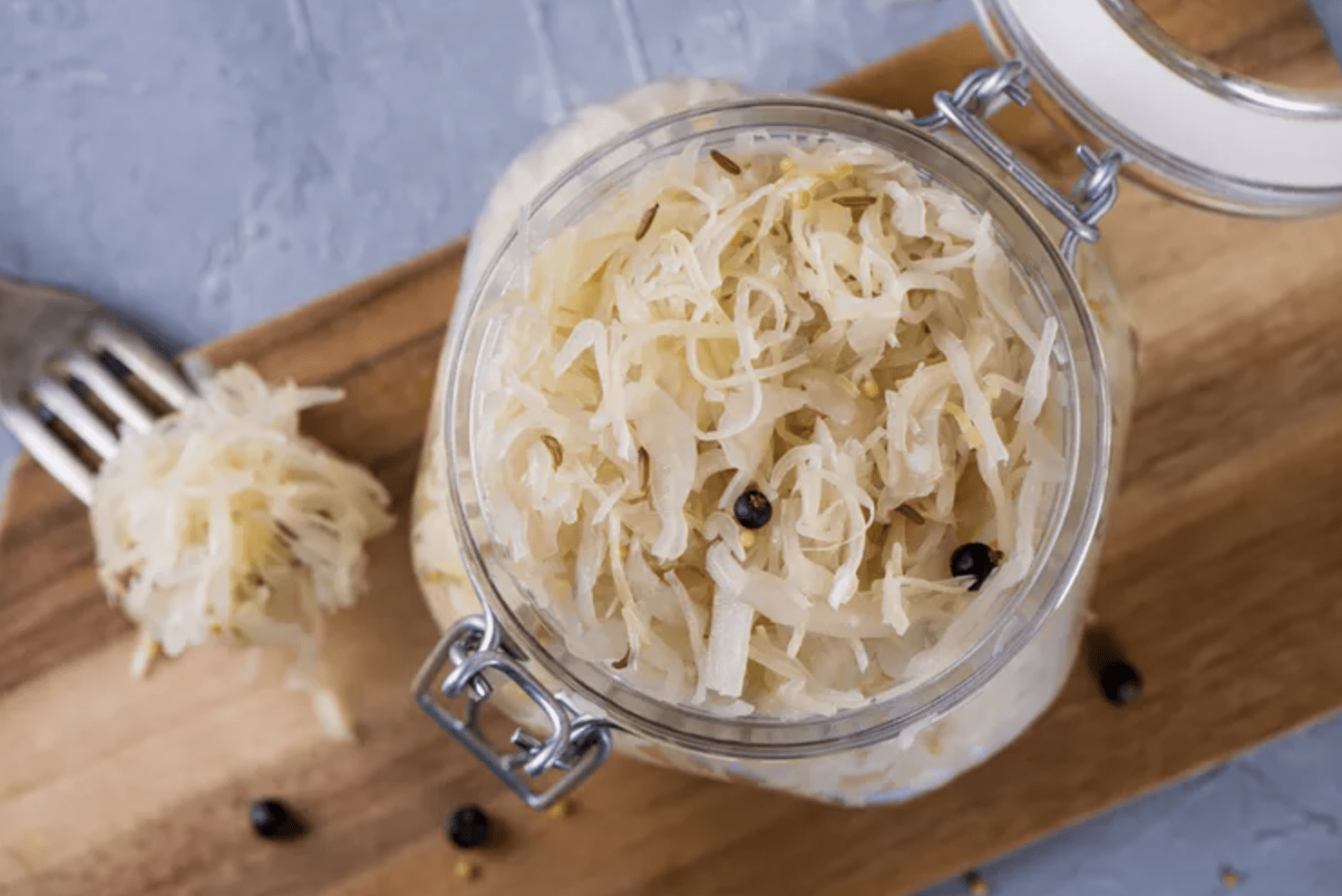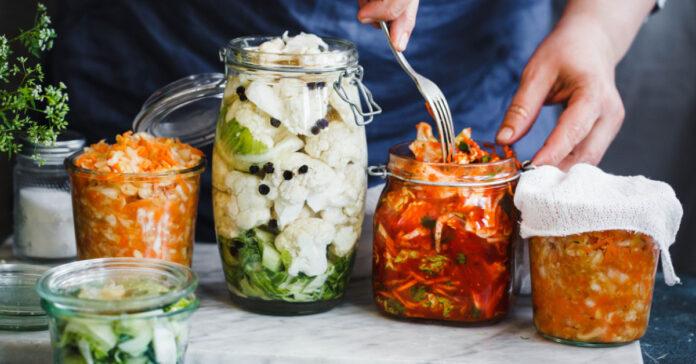It’s puzzling for the layman to know that gut fermentation (Candida, etc.) is bad. Yet fermented foods can be good for us! Let’s take a closer look because—make no mistake—this is about lifelong health habits that will either keep you in good shape, or kill you fast!
Now, I’ve got your attention, huh?
Let’s start with good fermentation. Fermented foods, such as sauerkraut, kefir, miso and kimchi (see fuller list below) have a definite positive effect of the gut microbiome (bowel flora).
We want to knock out the bad microbes in the upper intestine and replace them with friendly species, such as bacteroides and lactobacilli.
The important thing is that we don’t want uncontrolled fermentation going on in the upper gut. That will lead to wind and gas, heartburn, gastro-esophageal reflux disease (note that GERD is a symptom, not really a disease), bad breath, foggy brain and fatigue: just think of Candida of old!
The trouble starts all the way up in the mouth/pharynx and gets worse from there! There are many bacterial plaques and biofilms in the mouth. If the stomach is not producing sufficient acid to neutralize swallowed bacteria, they get through to the small intestine and raise hell.
Unfortunately, most doctors in their crass ignorance treat this sort of problem as an “acid” problem; they give antacids and proton-pump inhibitors, to block out stomach acid.
But that’s dangerous. It leads to overgrowth of the wrong sort of organisms, such as H. pylori, a known cancer risk factor. See, I told you this was about long-term health!
Do NOT let yourself be talked into taking antacid medication, H2 blockers or proton pump inhibitors.
Instead, you need to clear out the small intestine fermenters and that’s done by reducing your carb intake dramatically. We don’t need carbs: they are a risk factor for heart disease, diabetes, obesity and dementia. Bacteria love sugars; you must learn to hate sweet stuff! Change your palate!
Read up about the paleo-ketogenic diet.
Apart from starving them out, we use a technique called probiotics to replace unwanted and unhealthy bacteria. This shoves bad bacteria out of the way. Eat lots of probiotics.
[Prebiotics is related but not the same: prebiotics means eating fiber-rich foods].
Here are some suggestions for super-healthy probiotic foods. These are all fermented, so fermentation, per se, is not bad.
Try These Fermented Foods
1. Apple cider vinegar.

All vinegars are fermented, by definition. Apple cider vinegar enjoys a superb reputation for health-giving properties (corny alkaline-foods wannabes take note). Make sure it’s unfiltered (cloudy) because that means it contains the so-called “mother”.
2. Kombucha.
Kombucha is a mildly fizzy, fermented drink made from sweetened tea and a specific culture known as a ‘scoby’, a mixture of live bacteria like Acetobacter and Pichia, and yeasts like Saccharomyces, Zygosaccharomyces, and Brettanomyces. The bacteria and yeast in the scoby convert sugar into ethanol and acetic acid. Acetic acid tastes sour (vinegar is acetic acid).
3. Kefir.
Kefir is a fermented milk drink similar to a thin yogurt or ayran, prepared by inoculating the milk of cows, goats, or sheep with kefir grains. For those with a dairy allergy (or strict vegans) it can be made from coconut milk or even just water with sugar added.
4. Cheeses.
Not all cheeses are good fermenters. Gauda is good, so too is Italian mozzarella, Edam, parmesan, ricotta and goat’s.
5. Miso.
Japanese miso paste is made from soybeans and grains that are fermented by koji enzymes and beneficial bacteria. Miso is rich in gut-friendly bacteria, protein, vitamins E and K as well as isoflavones, plant compounds which may have anti-cancer benefits.
6.Kimchi.
Kimchi is a traditional Korean food, consisting of salted and fermented vegetables, most commonly using napa cabbage or Korean radish. A wide selection of seasonings are used, including gochugaru, spring onions, garlic, ginger, and jeotgal, etc. Kimchi is also used in a variety of soups and stews and has established a reputation world-wide.
7. Natto.
Natto is definitely NOT delicious. It’s awful; it stinks rotten. But it’s easily the healthiest food on this list. Indeed, it may be one of the reasons why the Japanese have the highest survival rates in the world (most centenarians per million population).
Natto is fermented from soybeans and is a rich source of beneficial bacteria. It’s traditionally consumed at breakfast. It contains as much as 100 times more vitamin K than some cheeses, which is particularly useful for those at risk of poor bone health. In other words, it reduces the chance of bone fractures.
But vitamin K also affects blood clotting, so if you’re on blood thinning medication, such as warfarin, you should refer to your health care practitioner before introducing vitamin K-rich foods into your diet, although I doubt they’ll know much about this topic!
8. Tempeh
Tempeh is another popular protein alternative, made from cooked, fermented soya beans. It’s rich in useful bone-friendly minerals, such as calcium, magnesium and phosphorus.
9. Sauerkraut

Sauerkraut or ‘sour cabbage’ is essentially fermented cabbage and is thought to have originated in China more than 2,000 years ago. Today it is more associated with the German nation, hence (presumably) the derogatory label krauts.
The process of fermentation of cabbage initiates certain beneficial microbes and it’s these, along with the process itself, that makes sauerkraut such a healthy choice. It’s fiber-rich, heart-healthy and a great source of beneficial bacteria.
10. Yoghurt
Yoghurt (various spellings) has been around since at least 5,000 BC. Ever since Elie Metchnikoff first made his presentation of its health benefits to the Pasteur Institute in Paris in 1904, yoghurt has steadily grown in status and reputation.
It is made by fermenting milk with Lactobacilli organisms. It’s a good probiotic but Lactobacillus is not the best micro-organism for the job! Nevertheless, millions of gallons of it are consumed annually by people believing it is good for their gut flora.
France consumes the most; 57 percent of French citizens eat yogurt each day, with Turkey close behind at 52 percent. In general, Europeans consume about 40 pounds per year, mostly in the afternoon and evening. Other big yogurt consumers: Germany, Ireland, Canada, Great Britain, Brazil, Australia, and Indonesia.
You can make your own “yoghurt cheese” (labneh) as well.
Bad Fermentation
So with all this yummy, healthy food, how do we get into a negative health state by allowing fermentation in our guts?
The trouble is, uncontrolled fermentation by “wild” bacteria and yeasts, that it produces some horribly toxic compounds, such as methyl, ethyl and propyl alcohol, butylaldehyde, formaldehyde, smelly hydrogen sulfide (leading to bad breath and body odor), ammonia, and toxic sugars, such as D-lactate.
This in turn overloads the liver. Moreover, the liver requires an incredible 25 – 27% of our total energy output (the brain only needs 19 – 20% and the heart a measly 7%).
That means an overworked liver will result in an energy deficit, which is just another way of saying FATIGUE. With an overloaded, toxic liver you will be seriously tired.
But it’s worse! I am grateful to my friend Dr. Sarah Myhill for calling my attention to a fascinating paper by Japanese researcher Katsunari Nishihara, in which he reasons that certain brain disorders come about by the fermentation process being initiated in the brain by fermenting microbes that have migrated there and set up shop.
[Journal of Biological Physics and Chemistry 12 (2012) 11–18]
In addition to all that, fermenting gut bacteria may set up chronic inflammation and even compete with you for micronutrients—both a disaster for health and longevity.
Bearing these factors in mind, it is vital you quell fermentation in your upper gut.
How Would You Know?
Look at your tongue in the mirror; is it coated? It should be clean and pink. If not, Dr Thomas Levy recommends that you brush your tongue (with a toothbrush). It gets down into the crypts, where noxious bacteria may be lurking.
Try the stomach acid test. If you are not producing enough hydrochloric acid, there is nothing to kill bacteria before they get into the upper gut. Just dissolve ¼ of a teaspoon of bicarb in a small tumbler of water first thing in the morning and swallow. If all is well, the acid in your stomach will interact with the bicarb and make it fizz. As a result, you will start burping. No burps, no stomach acid!
Hydrochloric acid tablets could be a short-term solution but to solve the problem properly and permanently, you need to create new dietary habits.
Lab work. At first this seems attractive. But actually testing for the kinds of toxins and microbes I’m talking about is expensive and tedious (you have to be present at the lab). It’s easier to consider the clinical picture carefully: do YOU fit some of the descriptions above?
Even if you don’t, healthy eating remains… well, healthy!
If you haven’t read it yet, you’ll probably enjoy my masterful book FIRE IN THE BELLY. It’s extraordinary how many diseases start “below the belt”! Get yourself a copy here. 
To Your Good Health,
Prof. Keith Scott-Mumby
The Official Alternative Doctor




